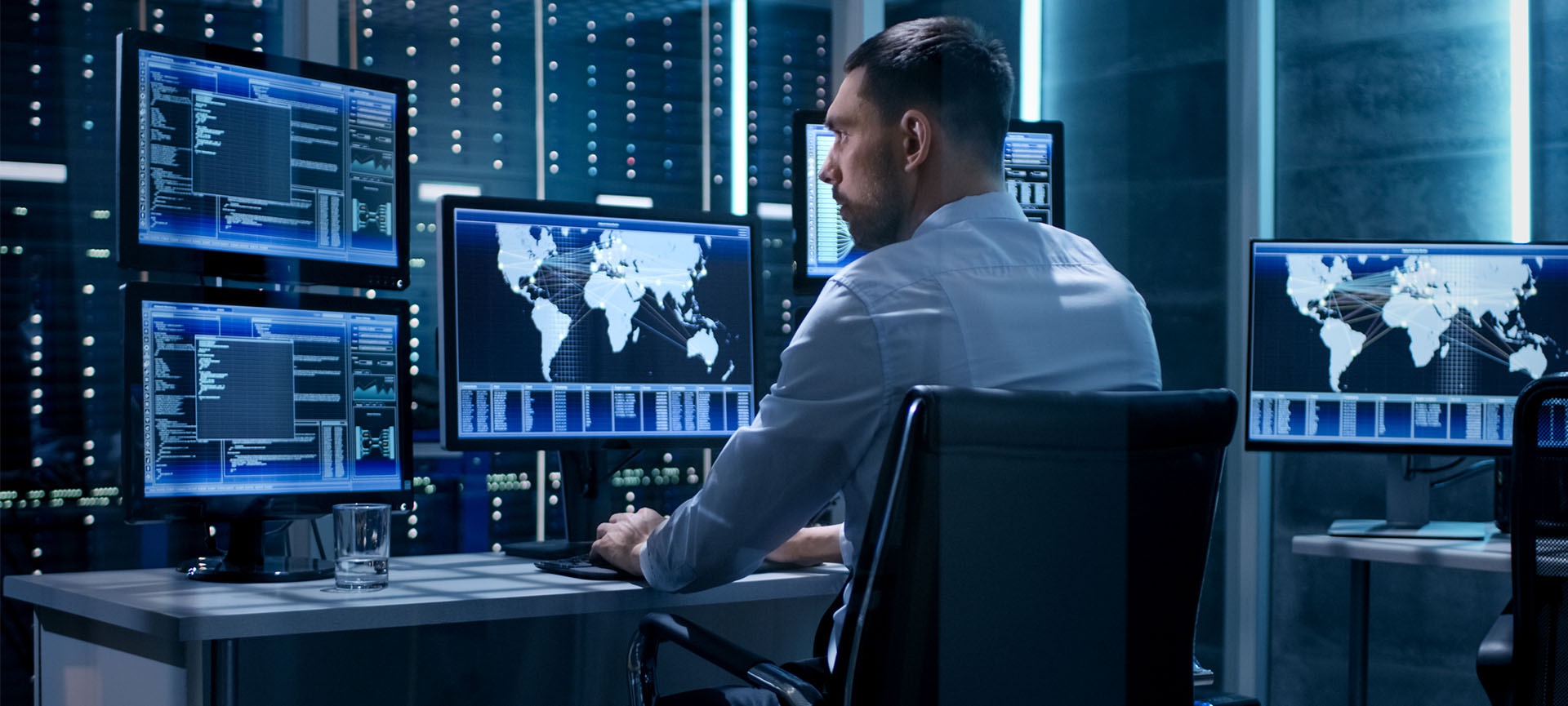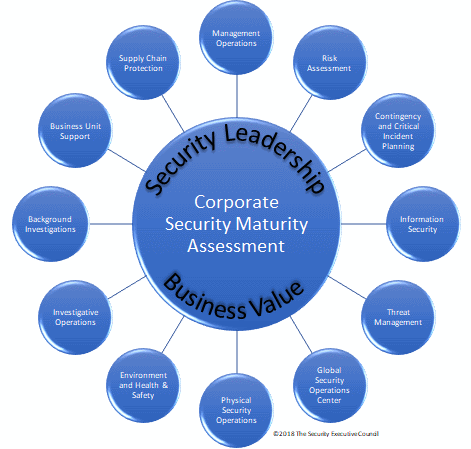A Plan for Corporate Security Quality: Safeguarding Your Business
A Plan for Corporate Security Quality: Safeguarding Your Business
Blog Article
From Cybersecurity to Physical Procedures: Enhancing Business Protection in a Transforming World
In today's swiftly progressing digital landscape, the importance of company security can not be overstated. As cyber threats become common and increasingly advanced, companies need to exceed traditional cybersecurity procedures to safeguard their properties and operations - corporate security. This is where the assimilation of physical security steps comes to be crucial. By incorporating the staminas of both cybersecurity and physical safety, companies can produce a comprehensive defense strategy that attends to the varied series of dangers they face. In this conversation, we will certainly discover the changing danger landscape, the demand to incorporate cybersecurity and physical protection, the implementation of multi-factor authentication steps, the value of staff member awareness and training, and the adaptation of security measures for remote labor forces. By checking out these vital locations, we will obtain useful understandings into exactly how companies can strengthen their corporate security in an ever-changing world.
Recognizing the Changing Danger Landscape
The developing nature of the modern-day globe necessitates a comprehensive understanding of the altering threat landscape for effective company security. It is crucial for organizations to stay educated and adapt their protection measures to address these advancing hazards.
One secret element of recognizing the transforming risk landscape is identifying the various kinds of risks that organizations encounter. Cybercriminals are frequently creating brand-new techniques to manipulate vulnerabilities in computer systems and networks. These dangers can vary from malware and ransomware assaults to phishing rip-offs and social design techniques. Furthermore, physical threats such as theft, criminal damage, and company reconnaissance remain prevalent issues for companies.
Monitoring and assessing the danger landscape is crucial in order to determine possible dangers and susceptabilities. This involves remaining updated on the current cybersecurity trends, assessing risk intelligence reports, and carrying out normal threat assessments. By comprehending the altering threat landscape, organizations can proactively execute proper protection procedures to minimize threats and safeguard their possessions, credibility, and stakeholders.
Integrating Cybersecurity and Physical Security
Integrating cybersecurity and physical protection is essential for extensive corporate defense in today's interconnected and digital landscape. As companies increasingly count on modern technology and interconnected systems, the limits in between physical and cyber dangers are ending up being blurred. To successfully guard versus these dangers, an all natural method that combines both cybersecurity and physical security measures is important.
Cybersecurity focuses on shielding electronic properties, such as networks, information, and systems, from unapproved gain access to, disruption, and burglary. Physical safety and security, on the other hand, includes procedures to safeguard physical assets, individuals, and centers from risks and vulnerabilities. By integrating these two domain names, companies can resolve vulnerabilities and threats from both physical and electronic angles, therefore improving their overall security pose.
The combination of these two techniques enables a more thorough understanding of safety and security threats and enables a unified reaction to events. Physical gain access to controls can be boosted by incorporating them with cybersecurity protocols, such as two-factor authentication or biometric identification. Cybersecurity actions can be enhanced by physical safety and security measures, such as surveillance video cameras, alarms, and secure access factors.

Applying Multi-Factor Authentication Procedures
As organizations increasingly prioritize comprehensive security steps, one efficient technique is the execution of multi-factor verification steps. Multi-factor verification (MFA) is a safety method that calls for users to offer several kinds of identification to access a system or application. This method includes an extra layer of protection by integrating something the customer recognizes, such as a password, with something they have, like a fingerprint or a safety token.
By implementing MFA, companies can considerably improve their protection posture - corporate security. Typical password-based authentication has its restrictions, as passwords can be quickly jeopardized or neglected. MFA alleviates these threats by including an additional verification aspect, making it more difficult for unauthorized individuals to access to delicate details
There are numerous kinds of multi-factor verification methods offered, including biometric authentication, SMS-based verification codes, and hardware tokens. Organizations need to assess their specific requirements and select the most appropriate MFA solution for their demands.
Nevertheless, the implementation of MFA must be meticulously intended and carried out. It is critical to news strike a balance in between protection and usability to avoid individual aggravation and resistance. Organizations should likewise take into consideration potential compatibility concerns and supply sufficient training and assistance to make certain a smooth transition.
Enhancing Employee Recognition and Training
To reinforce business protection, organizations must focus on improving worker understanding and training. In today's quickly advancing threat landscape, staff members play an important role in guarding an organization's sensitive info and properties. However, many safety violations happen as a result of human error or absence of understanding. Consequently, organizations need to spend in extensive training programs to inform their workers regarding prospective threats and the most effective techniques for reducing them.
Effective worker understanding and training programs need to cover a vast array of topics, consisting of information defense, phishing strikes, social engineering, password hygiene, and physical protection actions. These programs should be customized to the particular demands and duties of different staff member roles within the company. Normal training simulations, workshops, and sessions can assist staff members establish the required skills and understanding to respond and determine to security threats effectively.
Furthermore, organizations ought to urge a culture of safety recognition and give ongoing updates and pointers to keep employees educated regarding the current dangers and reduction techniques. This can be done through internal interaction networks, such as newsletters, intranet portals, and email projects. By cultivating a security-conscious labor force, companies can significantly minimize the possibility of protection cases and protect their beneficial possessions from unapproved accessibility or compromise.

Adapting Protection Measures for Remote Labor Force
Adjusting company security steps to accommodate a remote labor force is vital in making certain the security of delicate info and assets (corporate security). With the boosting trend of remote job, companies should carry out suitable security measures to mitigate the threats connected with this brand-new way of working
One critical element of adjusting security measures for remote work is developing secure communication networks. find more Encrypted messaging platforms and online private networks (VPNs) can aid protect delicate info and prevent unauthorized gain access to. Furthermore, companies must apply the usage of strong passwords and multi-factor authentication to improve the protection of remote accessibility.
An additional important factor to consider is the execution of safe remote accessibility options. This includes supplying staff members with protected access to corporate resources and information through digital desktop infrastructure (VDI), remote desktop computer procedures (RDP), or cloud-based solutions. These modern technologies make sure that sensitive information remains secured while allowing workers to do their duties properly.

Last but not least, thorough protection awareness training is crucial for remote workers. Training sessions must cover best techniques for safely accessing and dealing with delicate details, determining and reporting phishing attempts, and preserving the general cybersecurity hygiene.
Conclusion
To conclude, as the risk landscape remains to evolve, it is essential for companies to enhance their safety and security measures both in the cyber and physical domains. Incorporating cybersecurity and physical safety, executing multi-factor verification actions, and improving worker recognition and training are vital actions towards achieving durable corporate security. In addition, adjusting safety and security measures to fit remote labor forces is imperative in today's transforming world. By applying these measures, organizations go to the website can reduce dangers and shield their beneficial assets from prospective risks.
In this discussion, we will certainly check out the changing threat landscape, the demand to incorporate cybersecurity and physical security, the implementation of multi-factor verification actions, the significance of staff member recognition and training, and the adjustment of protection measures for remote labor forces. Cybersecurity actions can be complemented by physical security measures, such as monitoring electronic cameras, alarms, and secure access points.
As organizations increasingly focus on detailed protection measures, one effective approach is the implementation of multi-factor authentication procedures.In verdict, as the hazard landscape continues to evolve, it is essential for companies to enhance their security measures both in the cyber and physical domain names. Incorporating cybersecurity and physical protection, executing multi-factor authentication measures, and boosting worker recognition and training are crucial actions in the direction of achieving durable company safety.
Report this page